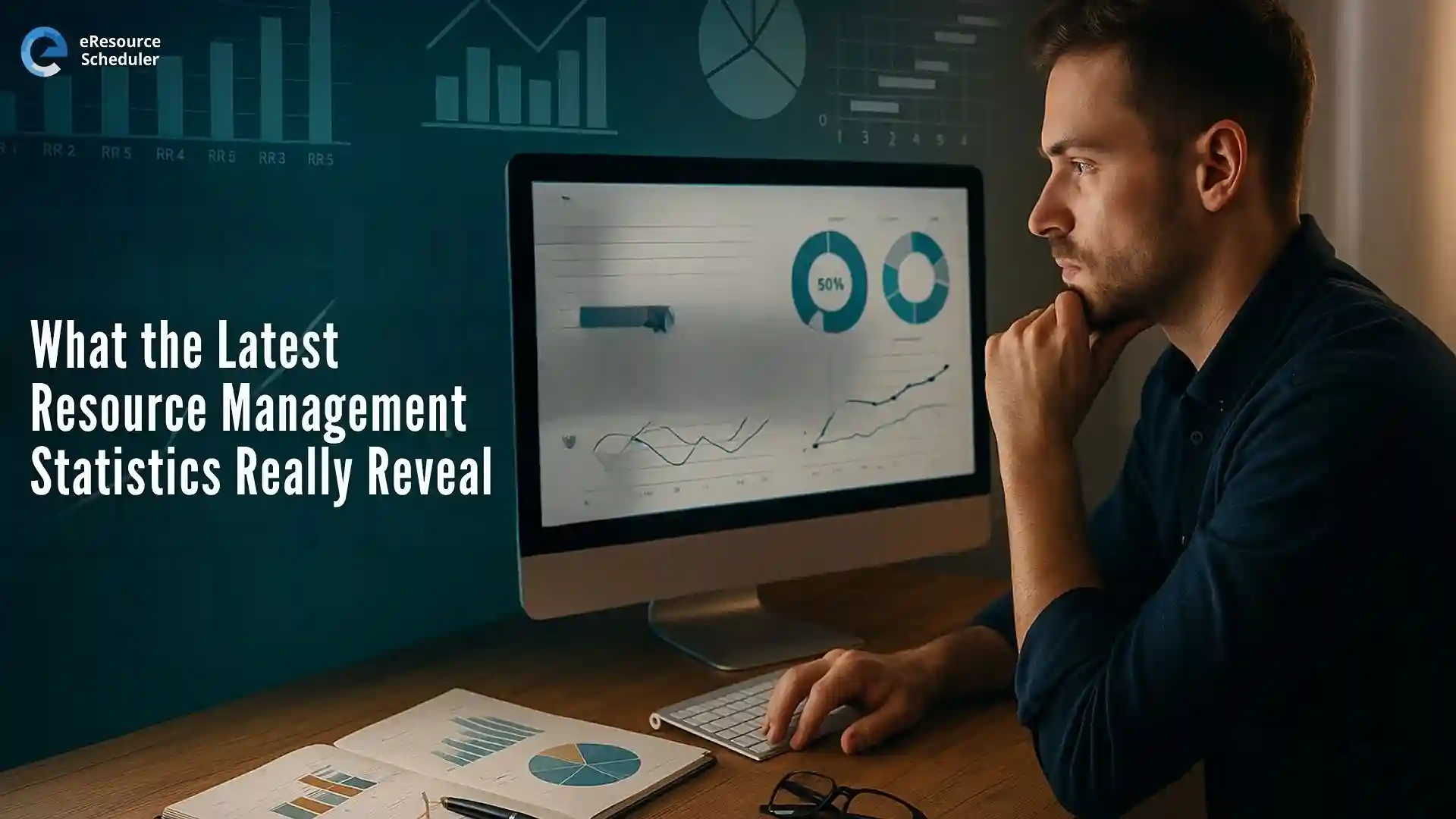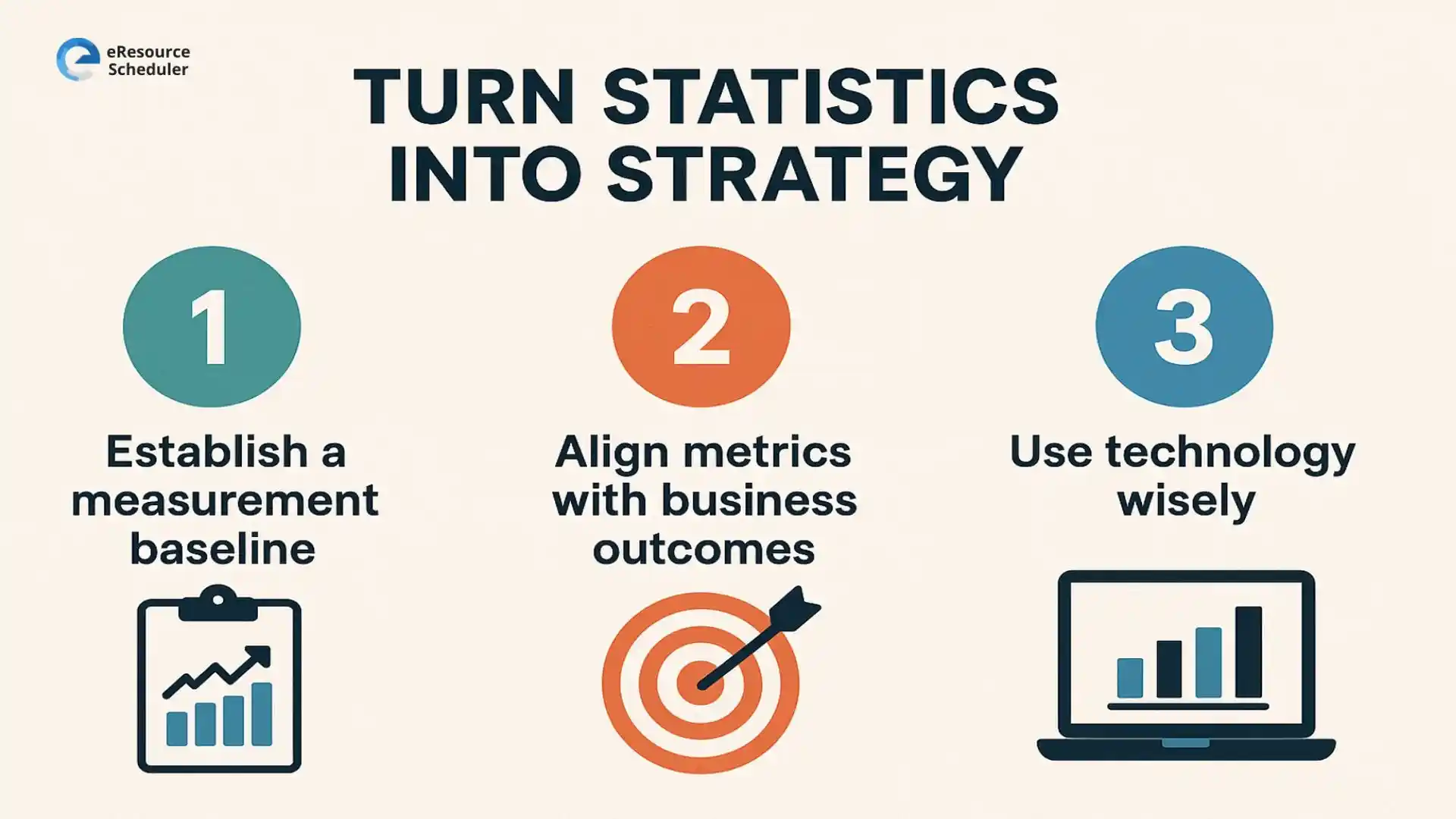
Every organization thinks it’s managing resources well. But once the numbers roll in, then the story changes.
The latest resource management statistics show a gap that’s impossible to ignore: while companies chase productivity and predictability, most still leak efficiency through poor visibility, misaligned capacity, and outdated tools. On paper, teams look 95% utilized. In reality, they are either stretched thin or idling in plain sight.
Have you ever wondered what is driving this disconnect? Well, it’s not a shortage of talent but a shortage of clarity. Resource management research over the past year paints a clear picture: businesses that track skills, measure utilization, and plan capacity proactively outperform reactive ones by a wide margin. The difference isn’t effort. It’s insight.
Resource management today isn’t about firefighting schedules or shuffling people across projects. It’s about using data as a lever, spotting where work, skill, and timing intersect to create real efficiency. And the numbers prove it: organizations that treat resource management as strategy, not admin, are hitting targets faster, using fewer hours, and retaining talent longer.
So, what do these statistics really reveal?
That success isn’t only about working harder. It is about seeing sharper. Let’s unpack what the data says, what it means, and how to turn insight into a measurable advantage with the help of resource management software .
Resource management research consistently shows one pattern: too much time spent allocating, too little spent optimizing.
Teams often think they’re 90% utilized, but dig deeper and the true figure hovers around 70–75%. That 25% gap is where profits vanish and burnout begins. Good data doesn’t just highlight inefficiency; it reveals where the capacity planning strategy needs to evolve.
Metrics like utilization, availability, and skills distribution aren’t vanity stats. They are the pulse of operational health.
When teams measure resource data consistently, they:
Put simply, efficiency in numbers breeds efficiency in operations.
Resource management statistics show that the problem isn’t a lack of talent, but a lack of visibility into existing skills. Many organizations still track employees by role, not by capability. This makes matching people to the right projects nearly impossible.
Modern capacity planning strategy leans on skills tracking in resource management, mapping what each person can do, not just what they were hired to do. The payoff is massive: better project fit, lower attrition, and faster delivery.
Roughly half of project delays stem from misaligned capacity and demand. When resource planners rely on historical averages or gut instinct, the pipeline becomes unpredictable.
The current trend is toward data-driven forecasting. Teams analyze utilization patterns, seasonal demand spikes, and even employee availability trends to project needs months ahead.
Resource management statistics reveal that organizations with mature forecasting practices deliver up to 30% more projects on time compared to those reacting week-to-week.
For years, resource planning lived in spreadsheets while finance and HR sat elsewhere. Now, integrated resource management software connects these dots.
With centralized data:
The result? Real-time clarity, not retroactive damage control.
Every dataset on resource management efficiency points to three recurring truths: visibility, adaptability, and accountability.
Organizations combining these factors through structured resource capacity planning software report up to a 25% improvement in productivity per resource, largely because they plan, instead of trying to solve problems as they come.

Before improving, measure what’s real. Collect data on:
This creates a factual foundation for improvement.
Resource management isn’t just an HR function. Map each metric to a tangible result:
That alignment turns statistics into executive-level decisions.
A well-built resource allocation software turns raw data into foresight. The best tools don’t just schedule tasks, but they also help answer:
By integrating these insights into day-to-day planning, numbers evolve from reports into a strategic compass.
Skills tracking is emerging as the silent hero of modern operations. Instead of simply managing “headcount”, leading organizations manage “skill-sets”.
Why it matters:
When connected to a resource management software ecosystem, skill mapping supports dynamic scheduling, where the right people land in the right work, every time.
The future of capacity planning strategy is predictive, not reactive. Data shows three shifts on the horizon:
Organizations that master these will no longer chase deadlines but design capacity around outcomes.
So, what do the latest numbers really reveal?
In short, the data isn’t just about efficiency; it’s about maturity. The most efficient organizations don’t just measure; they adapt fast, forecast better, and act on what their resource data tells them.
Resource management statistics don’t just describe where we are. They forecast where the smart teams are headed.
The pattern’s consistent: visibility wins. Organizations that tie data to decision-making, forecast demand before it hits, and match skills to real work are outpacing those still juggling spreadsheets and hunches. That is where intelligent tools step in.
If you are ready to turn statistics into strategy, book a quick demo of eResource Scheduler and see how real-time visibility, skill tracking, and capacity planning come together in one platform built for clarity, not chaos.
1. What do resource management statistics actually show?
They reveal how effectively organizations use their people and time, highlighting utilization gaps, workload imbalances, and opportunities to improve planning.
2. How do companies use resource management research?
They analyze it to benchmark performance, refine capacity planning strategies, and identify where resource allocation software can deliver measurable gains.
3. What’s the link between statistical efficiency and business growth?
Efficient use of resources lowers costs, prevents burnout, and increases delivery speed, all of which directly impact profitability.
4. Why is skills tracking important in resource management?
It ensures that talent is deployed based on actual competencies, not just job titles. This leads to better fit, higher quality output, and stronger retention.
5. How do modern tools for resource management help?
They consolidate scheduling, forecasting, and reporting into one system, improving accuracy, reducing manual errors, and making capacity planning strategy data-driven.
Plan Smarter. Schedule Faster.
Join thousands already using eResource Scheduler to align teams, time, and tasks seamlessly.